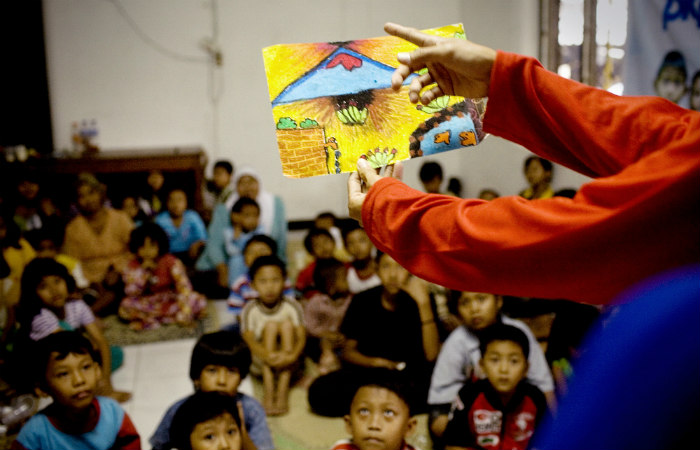By: Anita Makri
Send to a friend
The details you provide on this page will not be used to send unsolicited email, and will not be sold to a 3rd party. See privacy policy.
Specialists struggle with poor resources and social barriers. But they’re being creative to get people proper care.
One word — gap — shows up persistently in discussions about mental health in the global South. There is the ‘treatment gap’ between how many people are affected by mental illnesses and the number who receive care for them. There is the gap between the need for services and resources allocated for them, fuelled by yet another gap between the volume of scientific studies that come from high-income compared with low- and middle-income countries (LIMCs). [1]
And, in response to these, there is mhGAP: the WHO’s Mental Health Gap Action Programme, which offers evidence-based guidelines to help poorer countries better prevent and manage certain disorders.
The collection we publish today puts global mental health under the spotlight. It looks at evidence about the scale and neglect of mental illness, the complex issues that prevent care from reaching vulnerable people and some innovative strategies being used to help.
Burden and barriers to care
In an overview article with facts and figures, psychiatrist Neerja Chowdhary — who also advised us on this collection — and journalist Vijay Shankar explain the various mental disorders, their causes and impacts. They also outline the social and resource pressures that prevent people receiving proper care.
Just one statistic conveys the toll in the developing world: the WHO estimates that three-quarters of suicides occur in LMICs.
A separate feature written by Chowdhary and journalist Penny Warren adds to the evidence, rounding up key documents about mental disorders and organisations working in the field.
As part of their overview, Chowdhary and Shankar highlight innovative strategies that can go some way to break the barriers to care — among them training non-specialists and using technological tools that are already available.
These issues are explored in separate features.
Journalist Barbara Axt finds that a lack of resources means psychiatrists in many poor countries resort to training either staff who don’t specialise in mental health, or people in the community who can then help each other manage mental illness.
In a Q&A, Somali doctor and mental health researcher Djibril Handuleh explains what it takes to use information and communications technologies to draw on global expertise and train health workers in a fragile state with weak infrastructure.
The weight of stigma
Running parallel to fragile systems and limited resources is another major barrier to care that is firmly rooted in wider society: stigma.
In an opinion article, Jagannath Lamichhane, founder of the Nepal Mental Health Foundation, gives a powerful account of how social stigma weighs heavily on people suffering from mental illness in the developing world. He argues for a “pragmatic shift” to address mental health holistically and integrate it into general healthcare.
Stigma is, of course, closely linked with culture. In the second opinion piece of the collection, Dinesh Bhugra, president of the World Psychiatric Association, offers a thorough account of the many ways in which culture matters for psychological care. He calls for doctors to be more aware of cultural differences between patients and to adapt care accordingly.
Bhugra uses the example of migrant groups to highlight the role culture plays in mental health. And the third opinion article focuses on the current pressing crisis affecting the millions forced to leave their homes in Syria.
Migration specialists Mohamed Elshazly and Sarah Harrison home in on the evidence gaps researchers need to fill with local research so Syrian refugees and others affected by the conflict can receive better care.
In an audio interview, anthropologist Catherine Panter-Brick describes how one humanitarian programme is going the extra mile to evaluate its effectiveness with evidence of biological, not just psychological measures of how Syrian youth respond to stress.Bridging the treatment gap
The views and evidence in this collection show that resource limitations and sociocultural factors loom large in mental health — both as drivers of the treatment gap and as limitations that drive novel approaches to bridging it.
Prominent psychiatrists working at the policy level and on the ground reinforce some of these messages and offer additional insight.
Oye Gureje, director of Nigeria’s WHO collaborating centre for mental health research and training, says in a filmed interview that using non-specialists is the single most important step the country could take to scale up treatment.
Gureje also acknowledges the role of spiritual healers. Although their treatment can be harmful, he says, working with them is essential. This message is echoed by Olanrewaju Ibigbami, head of a mental health clinic in Nigeria’s Osun state, who says many people in his state visit spiritual healers and churches because they are unaware of services at the clinic.
Influential Indian psychiatrist Vikram Patel also discusses the role of religion and culture. In an audio interview, he explains how cultural understanding can help efforts to communicate with patients about their experience and to adapt services in a way that increases their acceptability and demand for them.
Patel also touches on how cinema is playing a part in approaching mental healthcare in a more innovative, holistic and participatory way. In India, for example, Bollywood songs and movie clips are being used to illustrate depression and drinking problems.
Moves to engage film and community groups show that the traditional setting of the clinic isn’t enough to end neglect of mental illness. Innovative tools and approaches to training may get around resource constraints, and that’s important. But a different kind of creativity is needed to get past social and cultural barriers to better mental health — one that draws on evidence to promote public discourse whether in communities, online or in cinema, to lift the cloak of stigma.
Anita Makri is opinion and special features editor at SciDev.Net. @anita_makri
This article is part of our Spotlight on Mental health matters.
References
[1] Mark Tomlinson and others Setting priorities for global mental health research (Bulletin of the World Health Organization, 2009)














